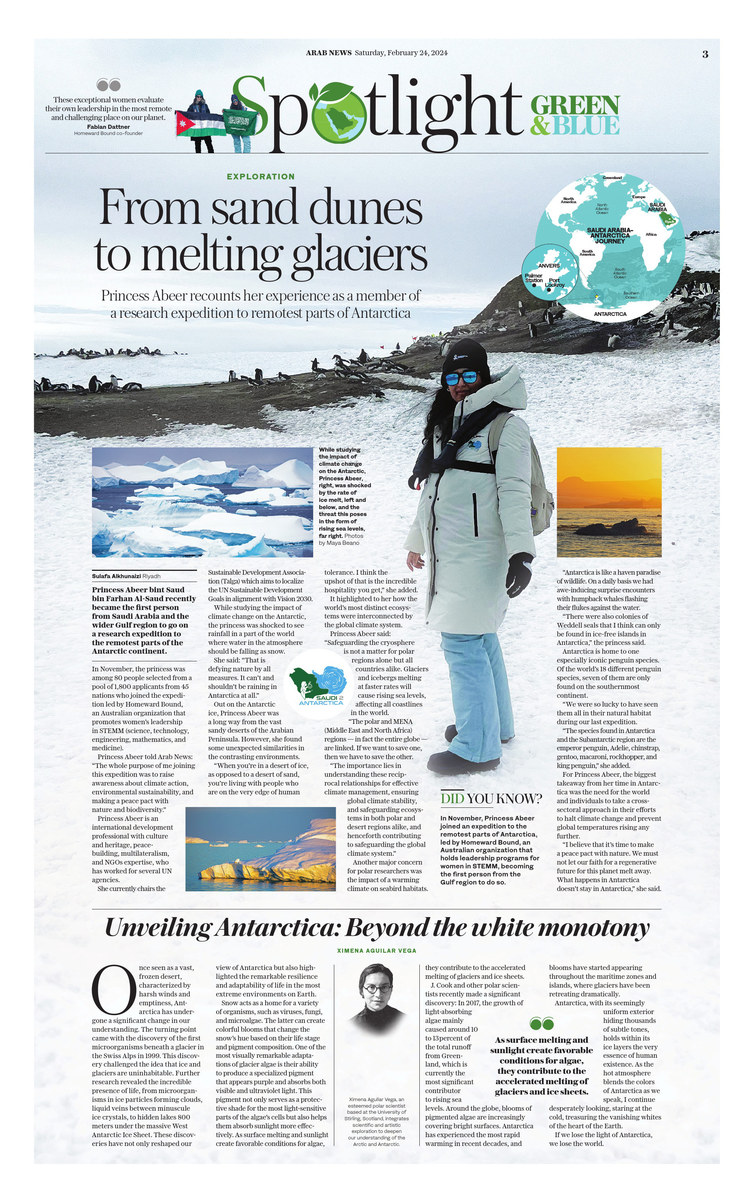From sand dunes to melting glaciers, Saudi Princess Abeer shares lessons learned from her Antarctic expedition
RIYADH: Princess Abeer bint Saud bin Farhan Al Saud recently became the first person from Saudi Arabia and the wider Gulf region to go on a research trip to remote areas of Antarctica.
In November, the princess was among 80 people selected from 1,800 applicants from 45 countries to join the mission led by Homeward Bound, an Australian organization that works to promote female leadership in science, technology, engineering, mathematics and medicine (STEMM).
“The main purpose of joining this mission is to raise awareness about climate action, environmental sustainability, and conclude a peace agreement with nature and biodiversity,” Princess Abeer told Arab News.
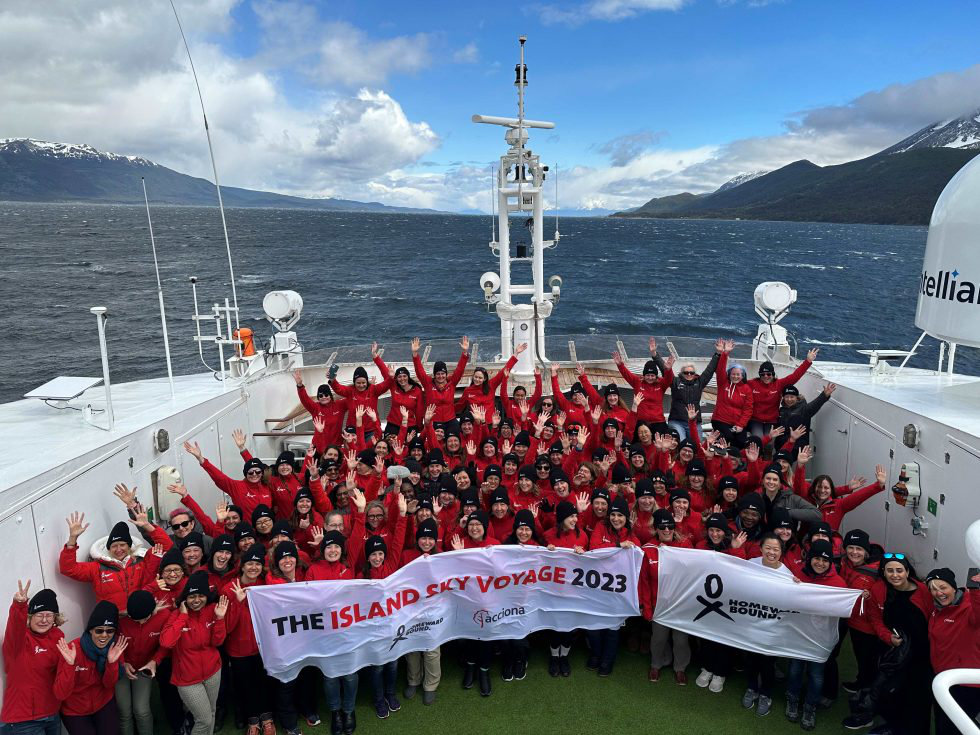
The women of The Island Sky 2023, from 18 countries, set sail on November 12, 2023, from Puerto Madryn, Argentina, on a 19-night voyage. (Photo courtesy of Homeward Bound)
Also on the mission were astronomers, oceanographers, glaciologists, mathematicians, marine biologists and renewable energy engineers, who collaborated on various projects, some of which were part of the United Nations Climate Change Conference (COP28), held in Dubai in November and December.
“As a group, a few of us have collaborated on multiple projects bringing together science, art, politics and advocacy at the UN by drafting reports and preparing our conversations and findings for our engagement at COP28,” the Princess said.
fastfact
• In November, Princess Abeer joined an expedition to remote areas of Antarctica, led by Homeward Bound, an Australian organization that holds leadership programs for women in STEM fields, becoming the first person from the Gulf region to do so.
Princess Abeer is an international development specialist with experience in culture, heritage, peacebuilding, multilateralism and NGOs, and has worked in several UN agencies.
She currently chairs the Sustainable Development Association (TALAGA) which aims to localize the United Nations Sustainable Development Goals in line with Vision 2030.
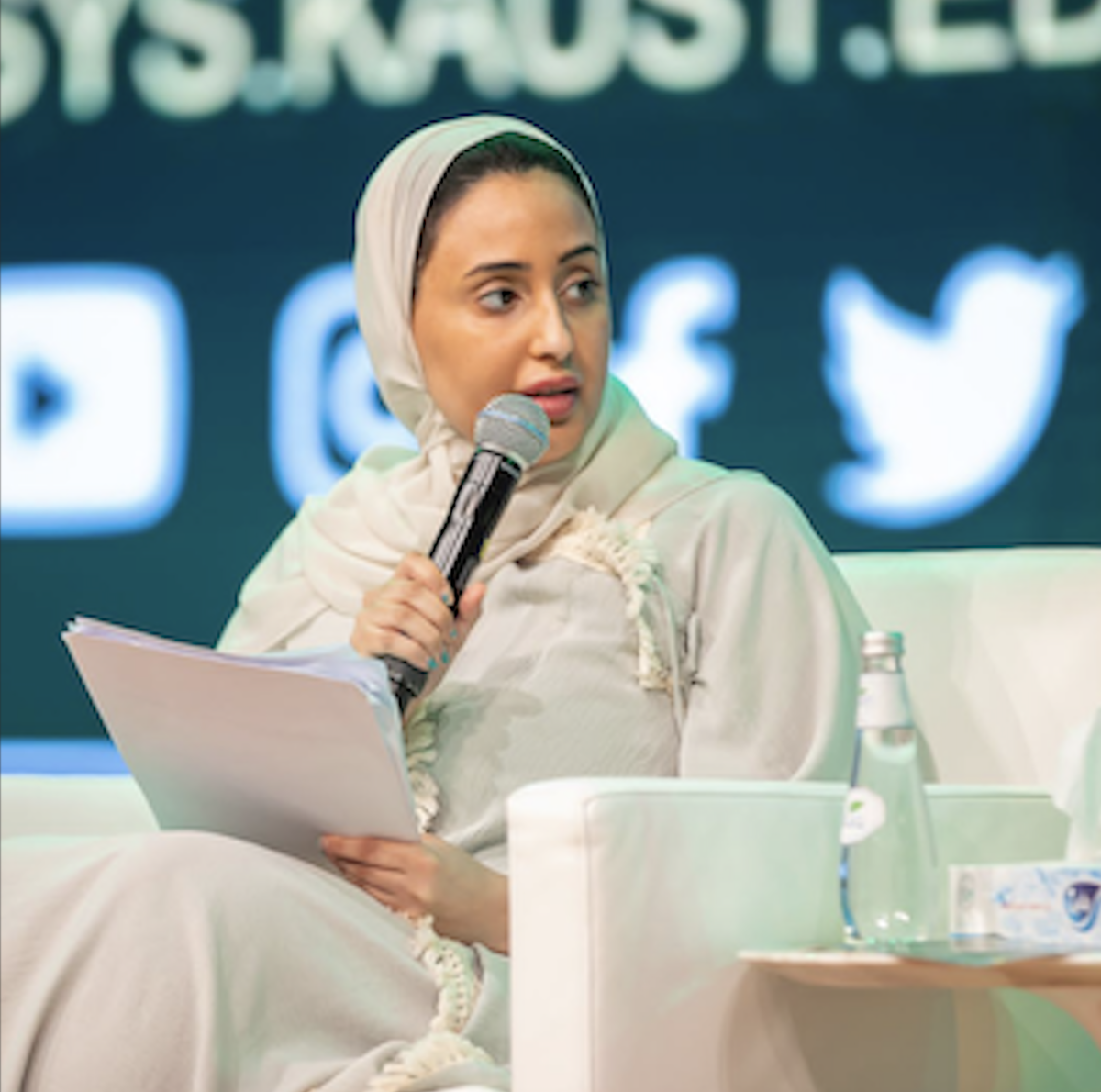
Princess Abeer has worked in several UN agencies and currently heads the Association for Sustainable Development, also called TALGA. (supplied)
The Princess indicated that she is passionate about devoting her life to projects that help preserve endangered species, the Earth and the planet.
She is also an artist, drawing inspiration from her surroundings and what she describes as “cosmic desert” adventures in Saudi Arabia, where she produces works on canvas using natural materials.
Before setting off for Antarctica, Princess Abeer indicated that she would pass on the heritage of her ancestors.
“I will rely on my roots as a woman of the desert and as a sailor, looking to the sky to guide me.
“The Southern Cross has led me to many answers and many questions, just as the North Star has led wanderers across the desert for countless generations,” she added.
For thousands of years, the Bedouins who crossed the vast deserts of the Arabian Peninsula relied on the stars.
The November expedition was not entirely easy. The team's ship was struck by an unexpected storm while sailing in the Drake Passage, one of the world's most volatile sea routes, located between Cape Horn in South America and the South Shetland Islands in Antarctica.
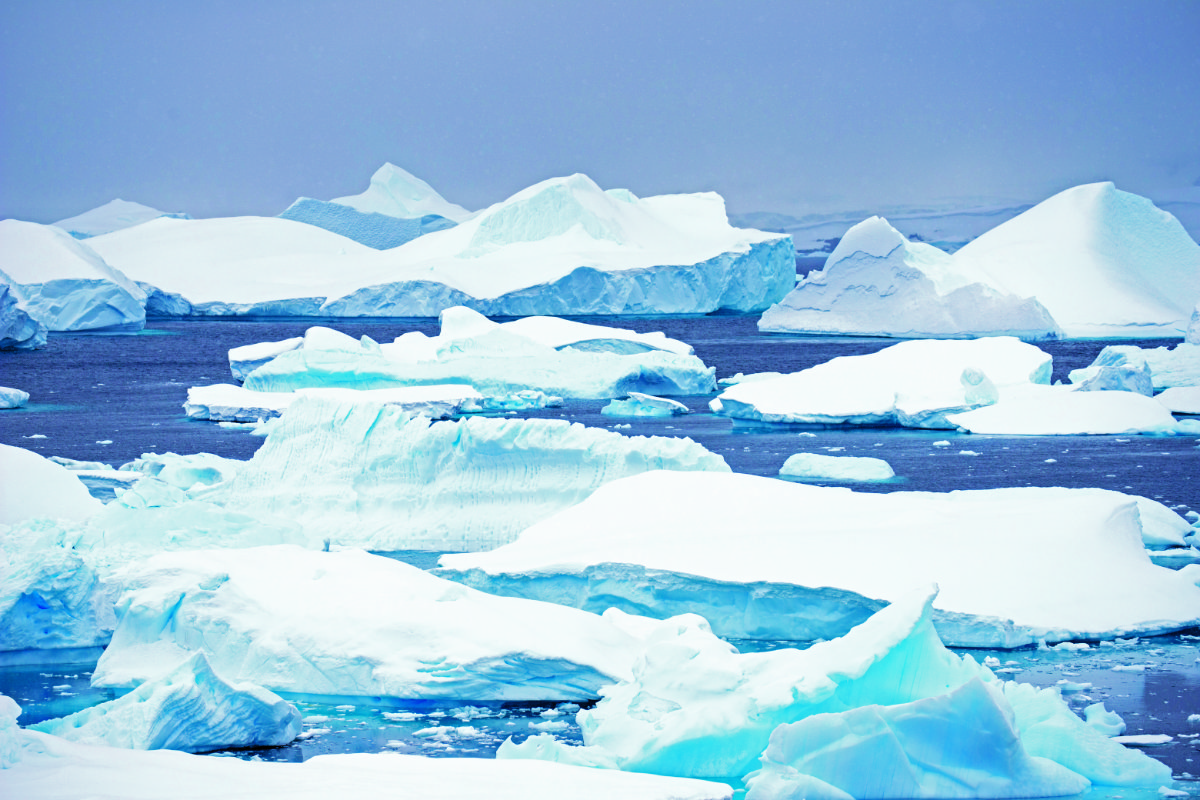
Navigating icebergs in stormy waters can be a truly frightening experience. (Photo by Maya Pino)
The princess said: “We have spent a very difficult 48 hours in the Drake Passage. My colleagues on the mission were lying on their beds. Others used dark humor to relieve their anxiety by playing the soundtrack to the movie “Titanic” on the ship's old piano in the open area lounge.
“A few others were brave and calm, enjoying themselves knowing the storm would pass.”
While the experience was undoubtedly frightening, she added that she was humbled, both by the power of nature and the skill of the ship's crew who got them safely through towering waves to calmer seas.
“To witness and experience the majesty of nature’s fury is the art of humbling exploration. “I believe it takes a lot of mental agility, gentle wisdom and humor to weather any storm, rogue waves or any difficulty in your life,” she added.
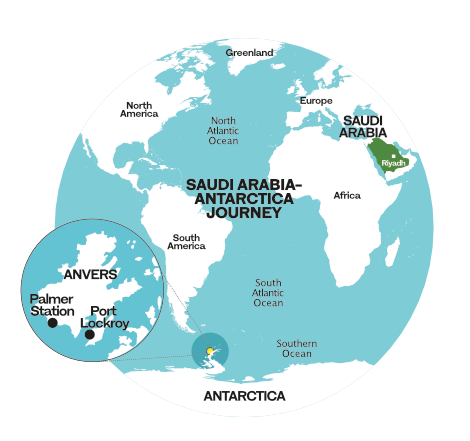
When the team arrived in Antarctica, Princess Abeer noted that she felt as if she had been transported to another world, similar to “Alice in Wonderland.”
“I felt like I was in an immersive, multi-sensory natural museum of raw, untouched beauty,” she said. “You can hear the sound of silence. Antarctica is icebergs and glaciers staring back at you.”
Although the trip took place during the Southern Hemisphere summer season, it was necessary for participants to wear proper gear to withstand the cold, as well as polarized sunglasses to protect their eyes from the sun's harsh ultraviolet rays.
But to work in such inhospitable conditions, the princess noted, participants need inner strength.
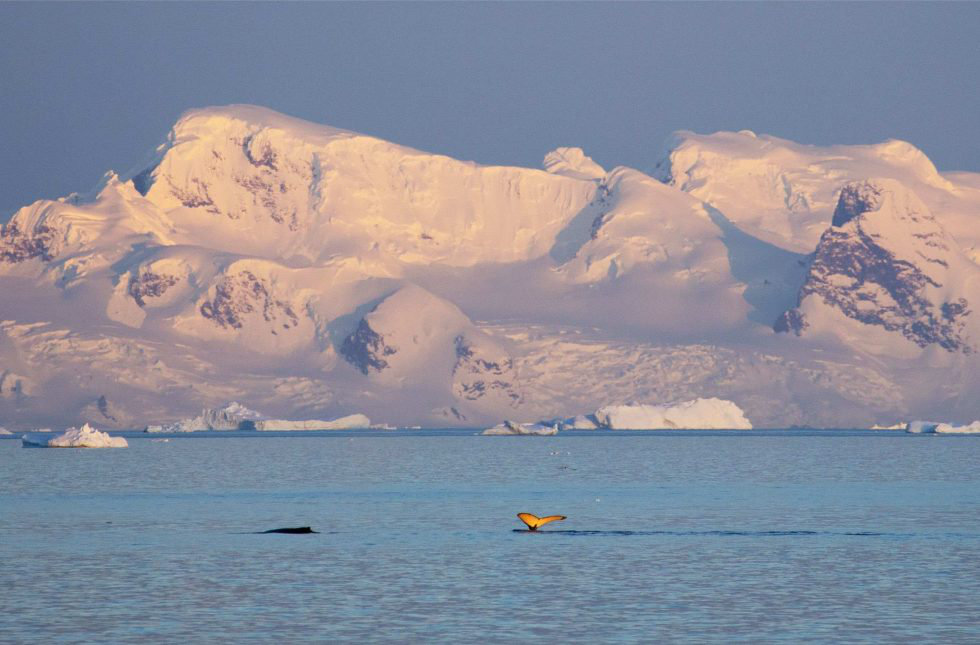
Humpback whales gracefully surface in Gerlach Fjord during sunset. (Photo by Maya Pino)
“In isolated polar regions, just like hibernating animals that survive on their own fat, we as polar explorers sought to kindle our souls – with nautical crafts like bunting,” she added.
Princess Abeer and the rest of the team slept on their ship anchored off the coast of Antarctica, but each day they used heavy-duty inflatable boats to move to their research stations and conduct field research.
While studying the impact of climate change on the weather, wildlife and geography of Antarctica, the Princess is shocked to see massive icebergs breaking into the ocean and the record number of invasive species attracted to the continent due to its warm climate.
This section contains relevant reference points, placed in the (opinion field)
In particular, she was amazed to see rainfall in a part of the world where water is supposed to fall into the atmosphere as snow.
“It was raining occasionally instead of snowing,” she said. This defies nature by all standards. It cannot and should not rain in Antarctica at all.
On the ice of Antarctica, Princess Abeer was a long way from the vast sand deserts of the Arabian Peninsula. However, I have found some unexpected similarities in contrasting environments.
“When you are in a desert of ice, rather than a desert of sand, you are living with people on the edge of human tolerance. I think the result of that is the amazing hospitality you get,” she added.

View of Antarctica on a sunny day. (Photo by Maya Pino)
He showed her how the world's most unique ecosystems—from the polar regions and subtropical rainforests to vast inland deserts and coastal habitats—are interconnected through the global climate system.
Princess Abeer said: Protecting the cryosphere does not concern the polar regions alone, but rather concerns all countries alike. Glaciers and icebergs melting at faster rates will cause sea levels to rise, affecting all coastlines in the world.
“The Arctic and the Middle East and North Africa region – in fact the entire world – are interconnected. If we want to save one, we must save the other.
She added: “The importance lies in understanding these mutual relationships in order to effectively manage the climate, ensure global climate stability, and protect ecosystems in both polar and desert regions alike, and thus contribute to protecting the global climate system.”
Another major concern for polar researchers has been the impact of a warming climate on seabird habitats. Breaking up sea ice has disrupted colonies, while the arrival of invasive species from far north has led to the spread of bird flu.
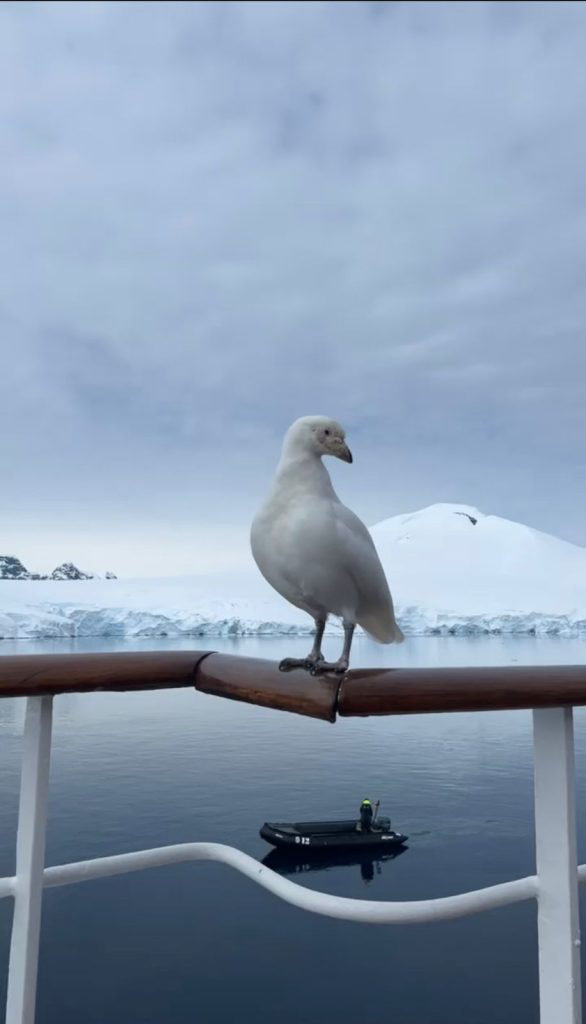
The disintegration of sea ice has disrupted bird colonies. (Photo by Princess Abeer Al Farhan)
“Antarctica is a wildlife paradise. On a daily basis, we have amazing surprise encounters with humpback whales flashing their holes against the water.
“There were also colonies of Weddell seals which I believe can only be found on ice-free islands in Antarctica,” the princess said.
Antarctica is home to one particularly distinctive species – penguins. Of the 18 different species of penguins in the world, seven are only found in the extreme south of the continent.
“We were very lucky to see them all in their natural habitat during our recent trip.

Adelie penguin colony on an iceberg in Antarctica. (stock struggle)
She added: “The species found in Antarctica and the sub-Antarctic region are the emperor penguin, Adelie penguin, chinstrap, gentoo, macaroni, rockhopper and king penguin.”
For Princess Abeer, the most important learning from her time in Antarctica was the need for the world and individuals to take a multi-sectoral approach in their efforts to stop climate change and prevent global temperatures from rising further. She stressed that failure to do so would lead to further melting of ice and rising global sea levels.
“I believe it is time to make peace with nature. We must not let our faith in a renewed future for this planet fade. What happens in Antarctica does not stay in Antarctica,” she said.
